5 Ideas for a Great Home Learning Zone
http://decor-ideas.org 08/26/2014 04:13 Decor Ideas
As children head back to school, it’s back to reality for parents too. Now is the time to organize our homes for the homework that’s soon to come. Advance planning and a few simple strategies, the experts say, can help boost productivity and reduce the frenzy. Parents out there know what I’m talking about — there’s that special time of day when you’re monitoring homework, making dinner and maybe trying to entertain a rambunctious younger sibling, all before rushing off to sports practice or dance class. So take a deep breath and try these expert-approved tips at home.
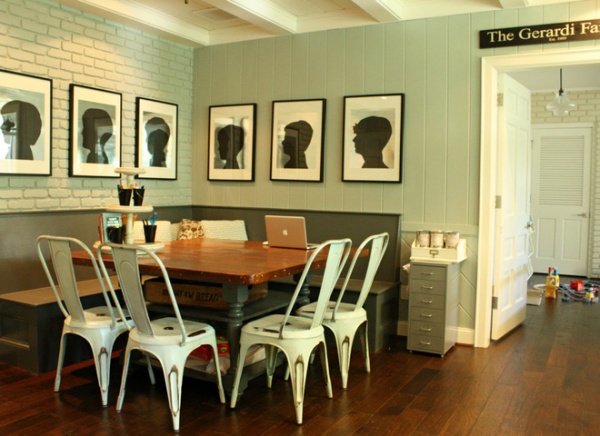
1. Create multiple homework zones. Here’s the good news: You don’t need to have one designated homework space that’s fully tricked out with all the bells and whistles. In fact, education expert Ann Dolin, author of Homework Made Simple: Tips, Tools and Solutions for Stress-Free Homework, says it’s best to have two to three spots in the home where children can work. “Moving around to different places can actually improve productivity,” she says.
Divide homework time between the kitchen table and the home office, for example. And Dolin says parents don’t need to spend a lot preparing a space. “It doesn’t have to be spectacular. The thing that matters most is that there aren’t a lot of distractions in the room,” she says.
To ease mobility among the various spaces, organize school supplies (pens, highlighters, scissors and such) in a portable container. Dolin suggests a plastic shower caddy from Bed, Bath & Beyond. Here the supplies are cleverly positioned on a rotating lazy Susan. Corralling all the supplies in one place before the child sits down also helps avoid unnecessary interruptions later. A portable supply caddy or bag is also great if younger siblings often do homework from the soccer field sidelines.
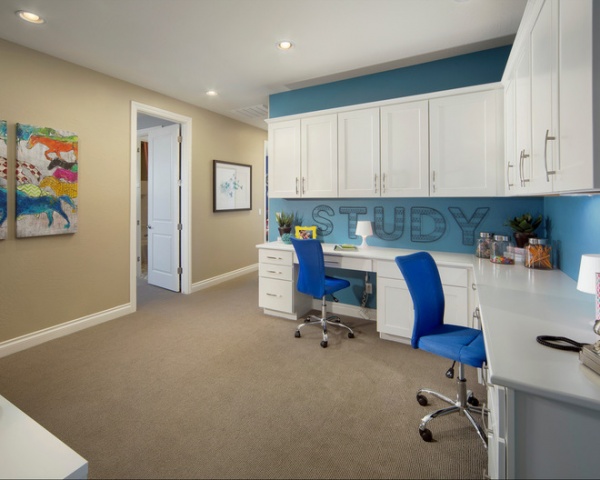
2. Change up the chairs. Judy Shincarick, director of the Occupational and Physical Therapy departments at The Lab School of Washington agrees that a change of scenery can boost productivity, but believes a change in chairs can help too. She recommends different chairs (or no chair at all) for different homework activities. Because most children can’t sit still in one spot, like a chair, for too long, breaking up the monotony is important. “A solid chair, pushed in at a solid tabletop, is a good place to start,” she says. But it’s only one scenario.
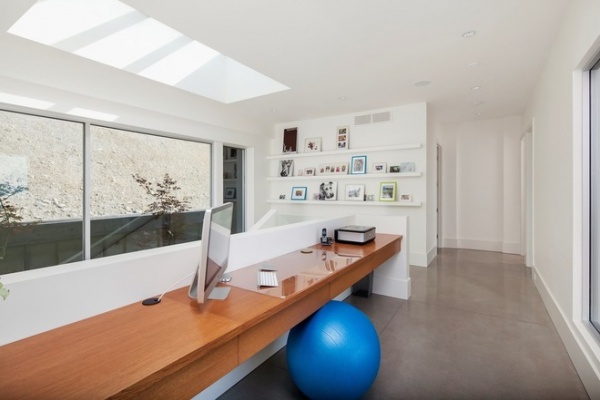
Some children are able to focus better sitting on a ball chair, gently bouncing as they work. The subtle movement engages core muscles and allows for increased alertness. “Ball chairs can help with focus or be a distraction, depending on the child,” says Shincarick, who advises parents to consider their child’s individual needs and adapt as necessary.
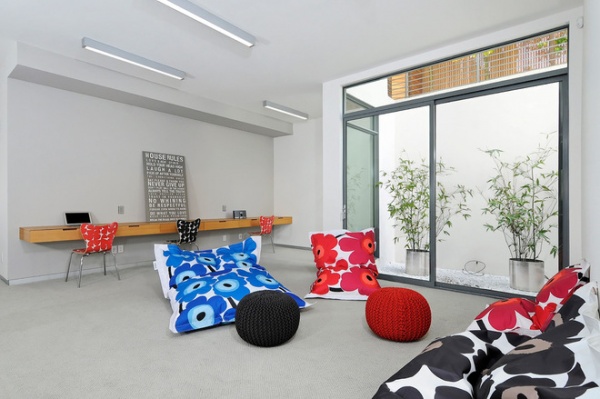
If it’s a solid chair for science and a ball chair for math, try a cozy beanbag or club chair for reading time. “Many children like that snug feeling of closeness to read a book. The cocoon feeling can ground them,” says Shincarick. Of course, if you notice your child getting a little too comfortable and drifting off, then it’s probably time for a move. Another option is to stand up for certain tasks, maybe at the kitchen counter to review vocabulary words.
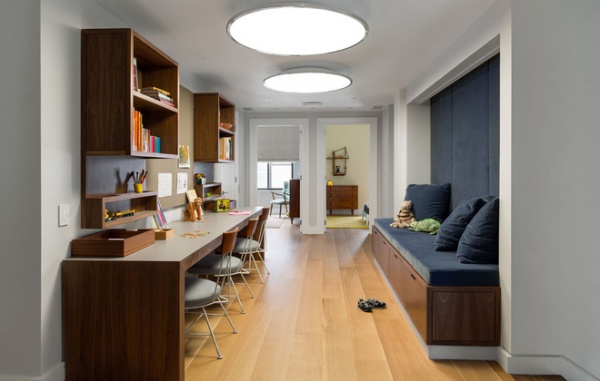
This home office offers flexible seating options — chairs for tasks requiring writing or typing and a comfy bench seat for reading and studying.
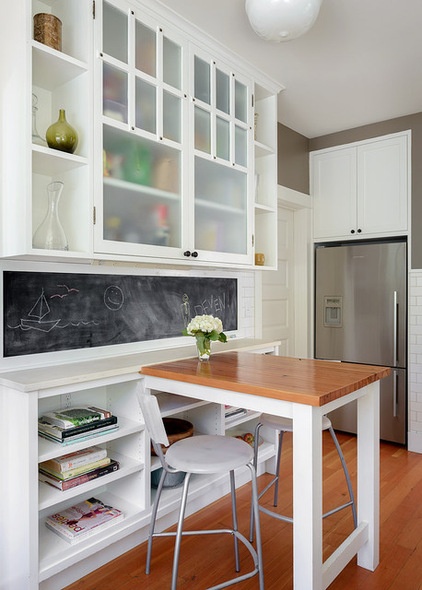
3. Select homework spots based on children’s ages and development. Younger children require more monitoring and support, so keep them close. The kitchen, dining room or a first-floor home office would work well. While my kids have done a lot of homework sitting at our kitchen stools, I love the designated homework space in this kitchen and the built-in chalkboard and shelves. With a setup like this, your child can work close by while you cook, but will be removed from the hustle and bustle of food prep.
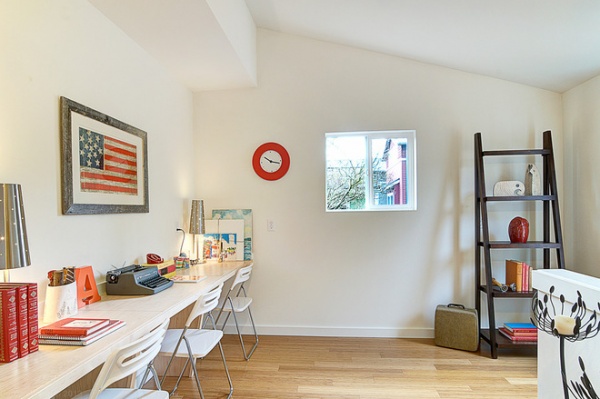
Here an unclaimed space off the kitchen has been converted to a homework area. The simple countertop desk is made from painted MDF. If your child works in or around the kitchen, make sure the tantalizing smells of dinner cooking aren’t a distraction.
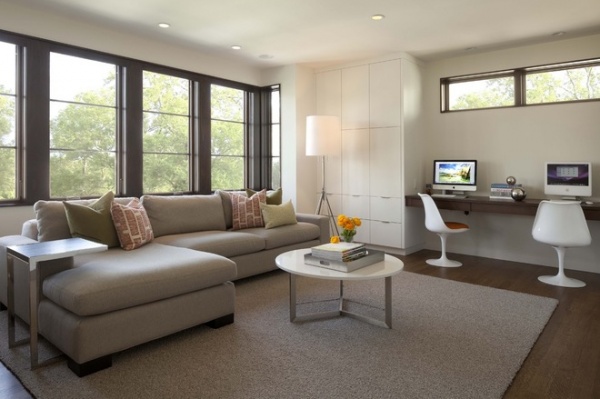
Consider setting up a homework space in the family room. The advantage is that the kids will be nearby, so you can check in easily. Of course, you’ll need to make sure there aren’t too many other activities going on in the room at homework time. Some children can tolerate background noise better than others. In fact, some work best with music playing.
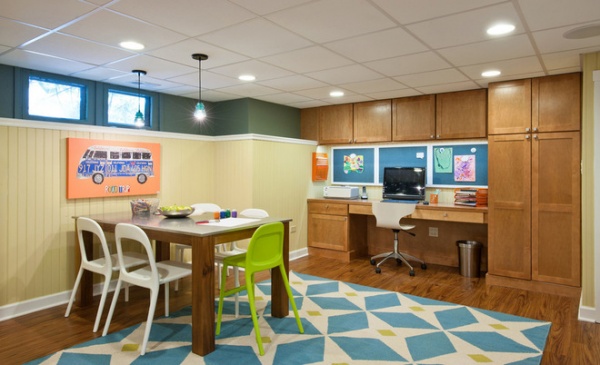
Older children and teenagers can venture a little further, although Dolin thinks most still do better choosing a spot for homework other than the bedroom, where distractions exist at every turn. A basement is, of course, one option. I would have loved this arrangement when my kids were younger — a workstation with a computer for the oldest and a table and chairs for the little ones. (I can see us here, all happily coexisting; me folding laundry while they peacefully work and color for hours. Well, a mom can dream, can’t she?) Still, a crafts table is a great addition to the homework zone for those larger projects, such as science fair boards.
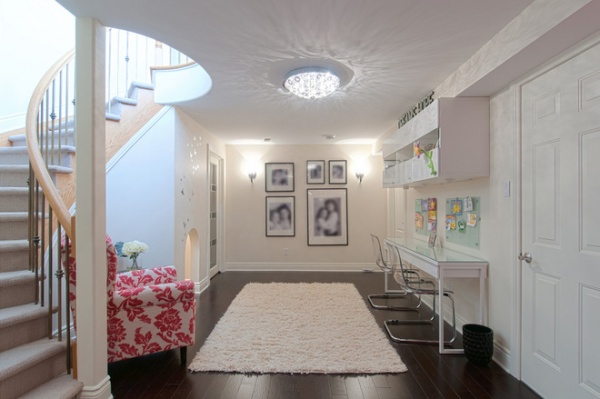
If your teenager opts to work in the basement or den, limit the distractions as much as possible. Today’s students rely on technology for their homework, so it isn’t often feasible to ban electronic devices altogether. But Dolin suggests setting some guidelines. Silencing the cell phone and putting it out of reach on the other side of the room can help prevent temptation. Children of all ages need frequent breaks during homework, so decide if they can check texts during a break. But Shincarick recommends keeping video gaming devices off limits until after homework. “Gaming devices zap their attention,” she says. “They’re not a good idea during breaks, because they suck you in to the next level.”
The homework station here is set away from the basement’s main entertainment area (and distractions).
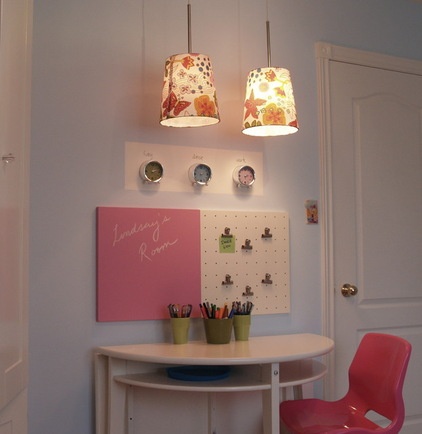
If you do decide that your older child is ready to work in the bedroom, be sure to create a separate work zone — the bed may be too relaxed for optimum productivity. Remember, though, the space doesn’t need to be grand. This demilune desk (it’s actually a round table that folds down) doesn’t take up much space yet provides a solid work surface. Garden pots organize supplies and keep the desktop neat, and a pegboard is great for posting notes.
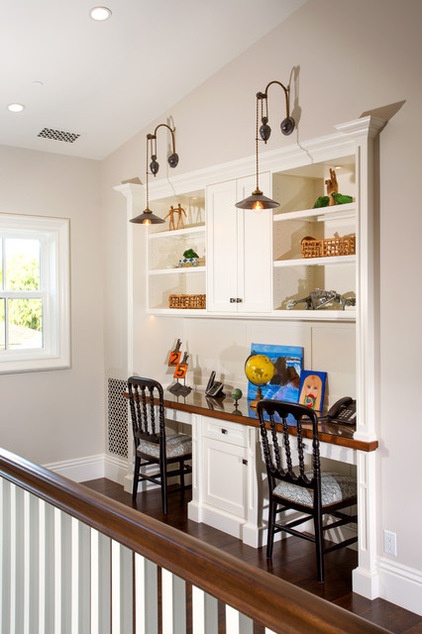
4. Don’t forget the essentials, and consider some special tools. Good task lighting is key for any workspace, and these hanging fixtures offer form as well as function. A homework station like this, tucked out of the way in an upstairs hall, is another great option for older kids — it will keep them away from distracting family interactions but still within earshot when you want to check in.
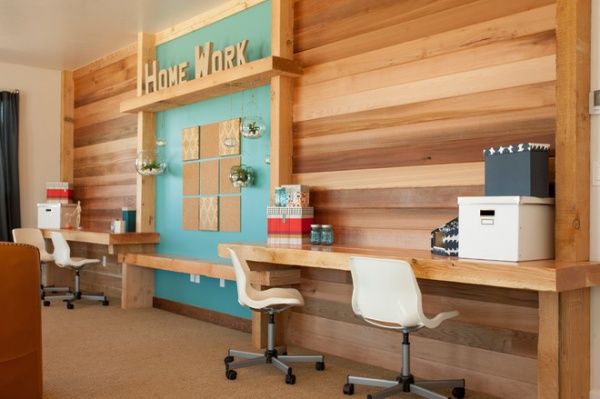
Of course, when you’re planning or choosing any homework zone, be sure to factor in the need for multiple electrical outlets for all the high-tech devices permanently attached to our children (and ourselves) these days. This space also offers great storage options to keep the work counter clutter free. Identify a permanent resting place for device chargers so they’re always available when you and the kids need them. The blue mason jars are creative vessels for storing smaller supplies, such as paper clips and pushpins for the fun corkboard squares.
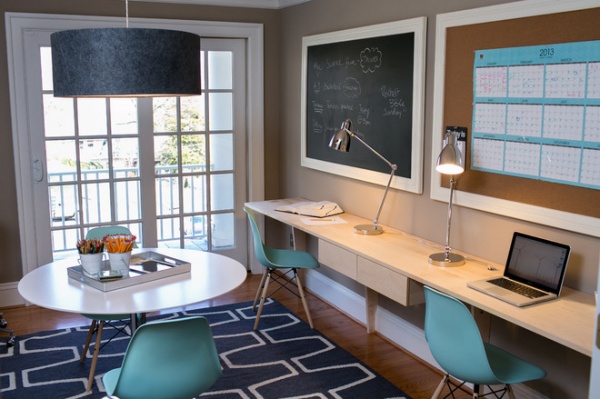
This homework station includes workspace essentials (flexible options, great lighting and portable supplies) and helpful extras too. The chalkboard and wall calendar are great for planning, prioritizing and reminding.
But here’s the thing: Once everything is lovingly in place, your child actually will have to sit and work. Remember that famous line from Field of Dreams, “If you build it, he will come”? It’s not always that smooth. Often, the hardest part for kids is beginning. Dolin is a big fan of timers (she especially likes the visual Time Timer tool). She recommends setting the timer for five or 10 minutes of concentrated work effort, what she dubs “5 Minutes of Fury” or “The Tolerable 10.” The strategy helps kids over that initial resistance: “They need to get over the hurdle of just getting started, and then they can keep going,” she says.
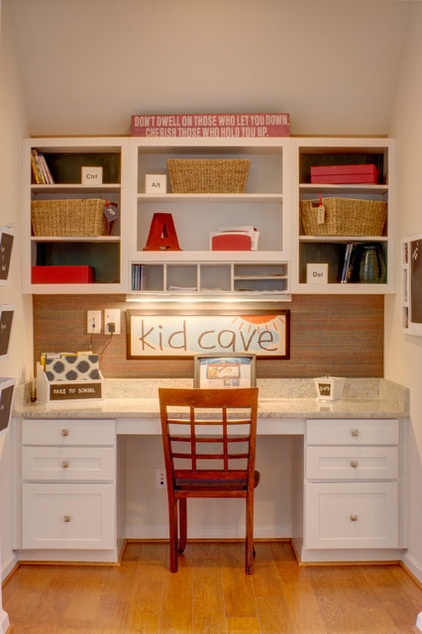
5. Engage your child in the space-planning process. Shincarick recommends giving your child a vested interest in the homework space(s). “It should be a joint effort between the child and parent,” she says. If your child has a dedicated homework area, make the space his or her own by adding homemade artwork and other personal touches. Of course, there is a delicate balance — too many personal items may be distracting.
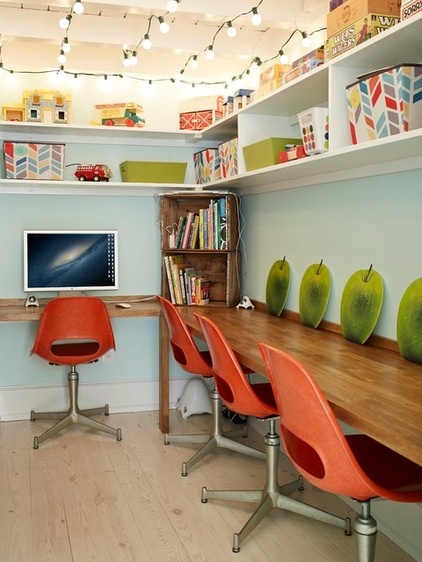
If your children work in the home office or a common area, they can still get involved in organizing the space. Task them with stocking the portable supply caddy. Shop together for colorful containers, printed file folders and other supplies.
Your turn: Got any tips for creating a successful homework station? Share them in the Comments.
More: One parent’s DIY quiet homework station
Related Articles Recommended












